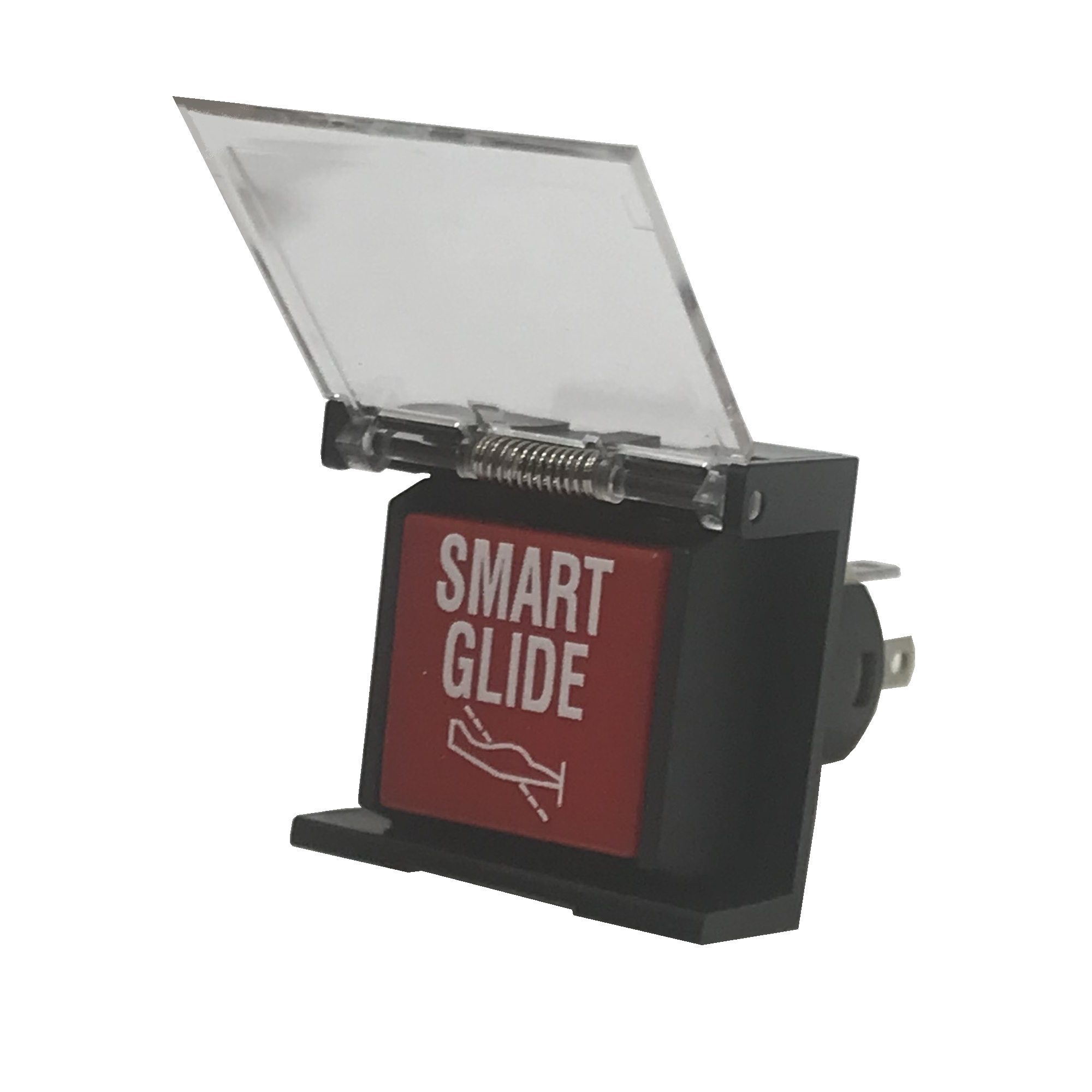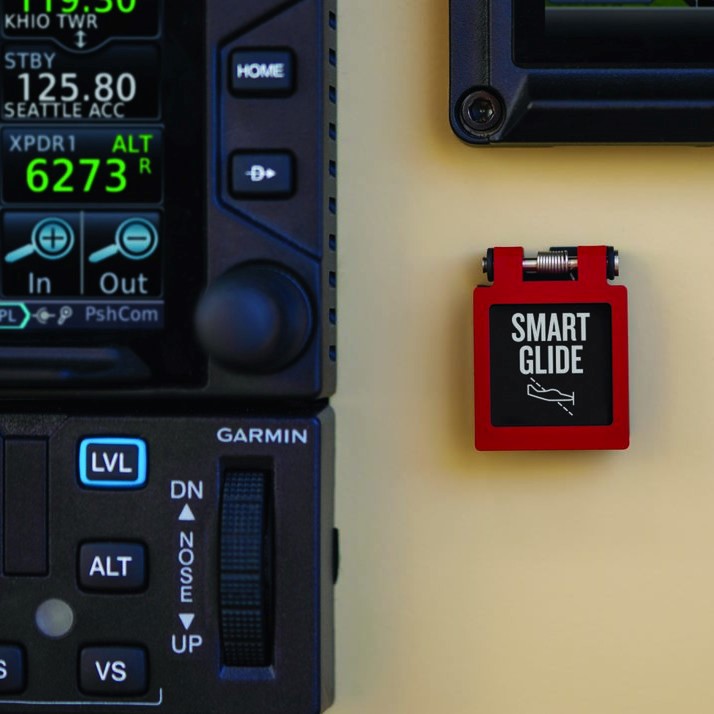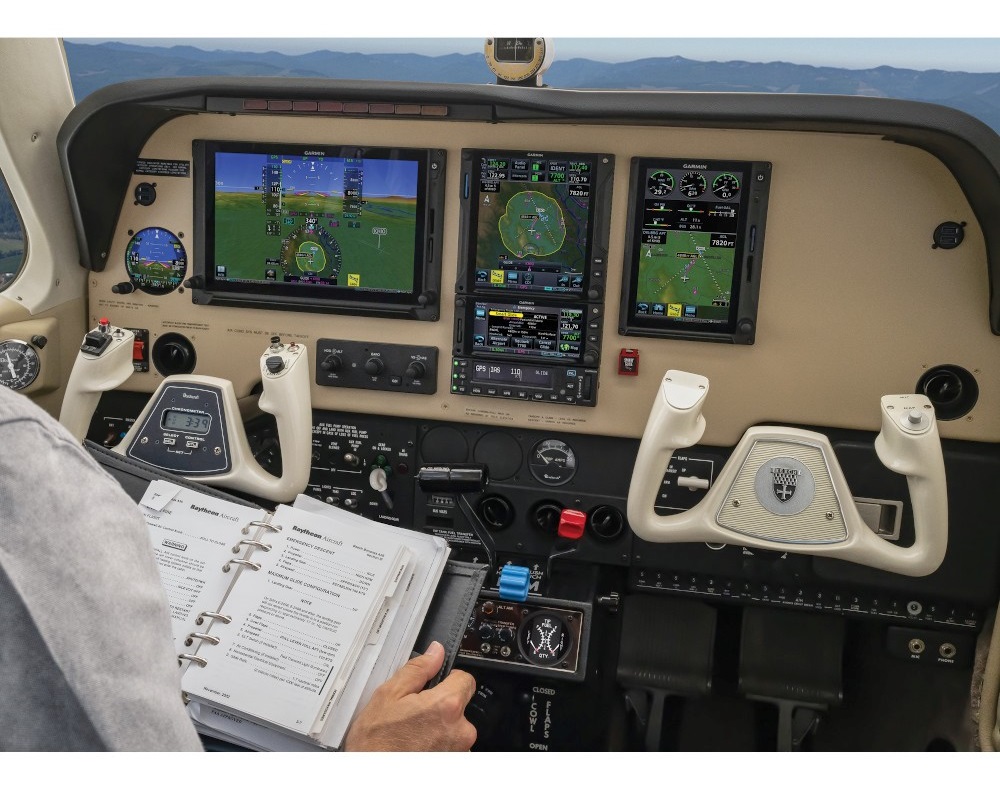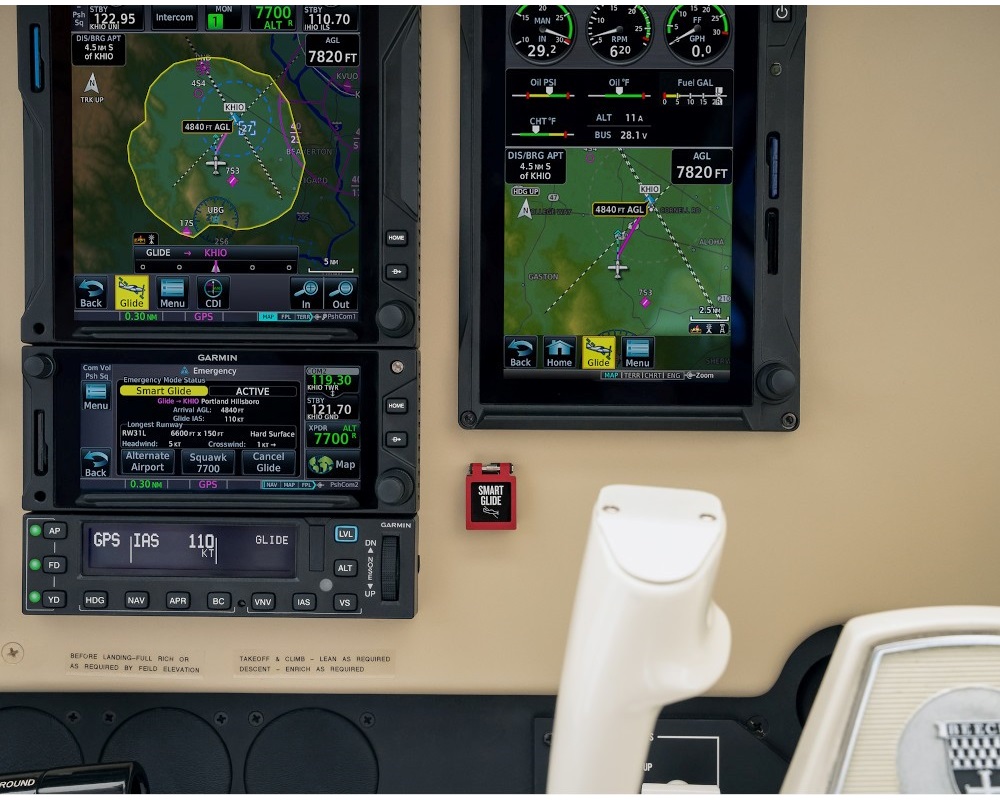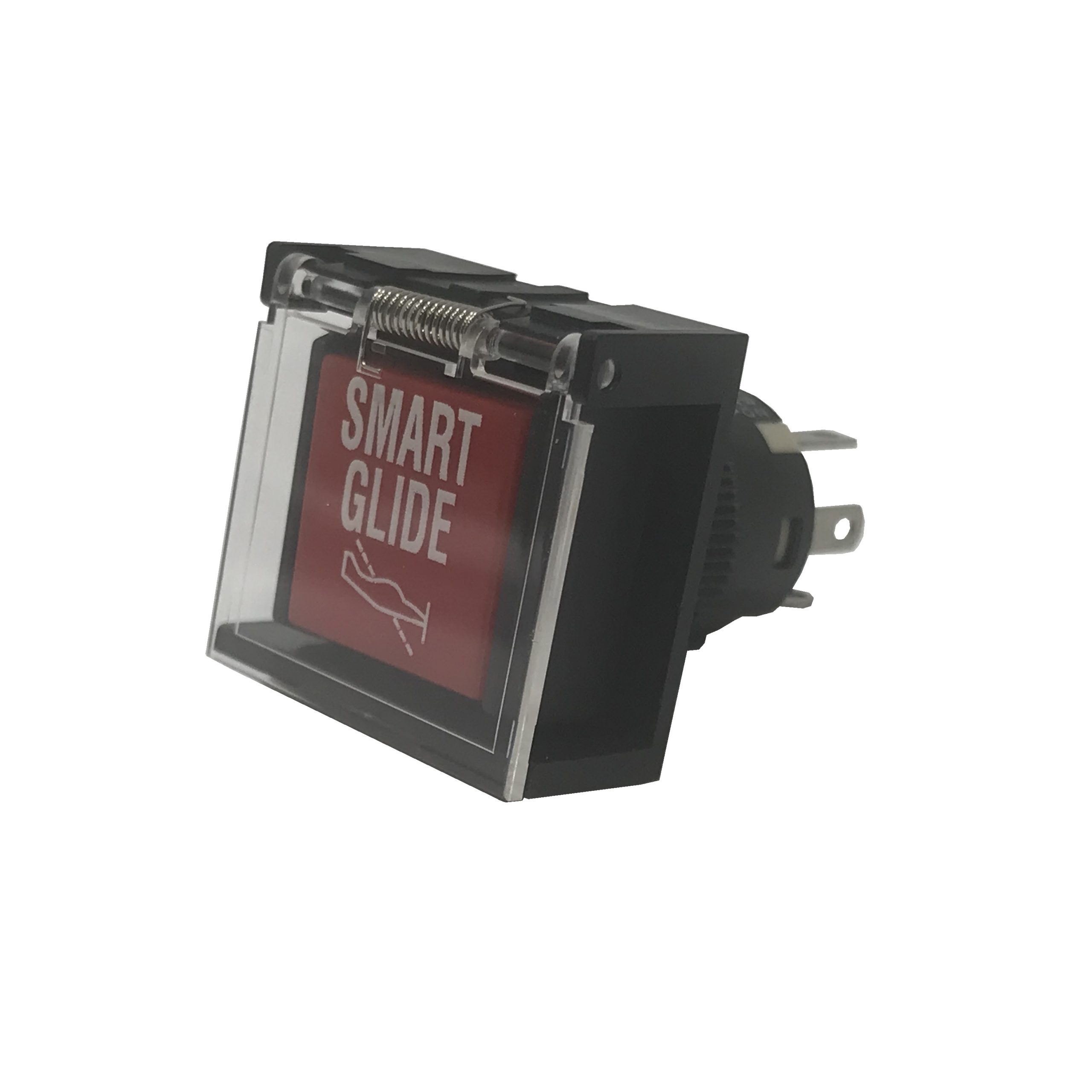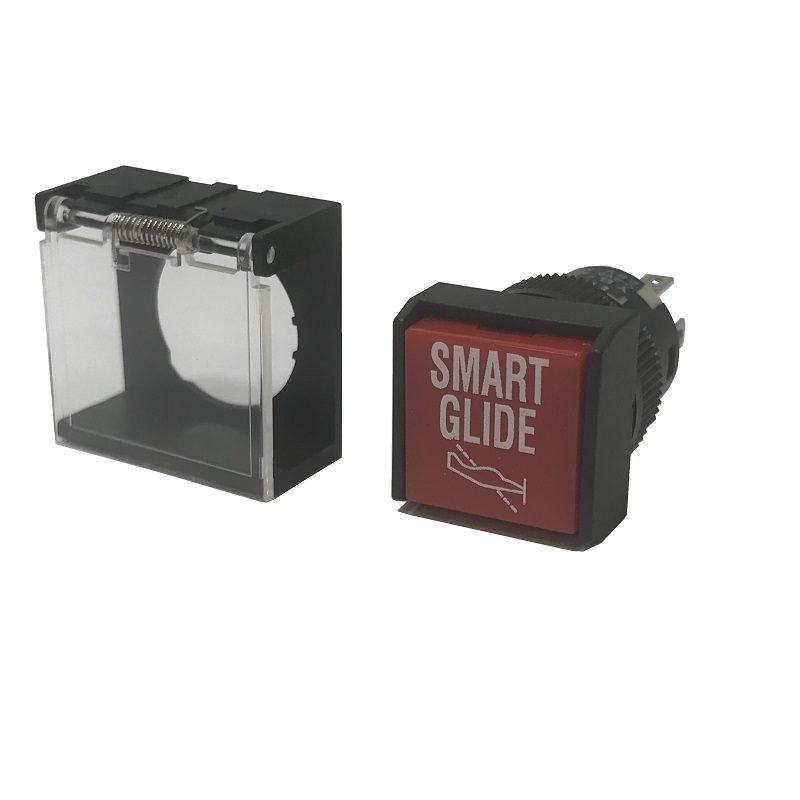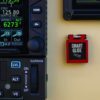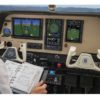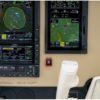Description
Push Button – Normally Open / Normally Closed
5/8″ hole size (.625″)
In the event of the loss of engine power in a single-engine airplane, a pilot faces the urgent, workload-intensive job of safely flying the aircraft. Our Smart Glide function — available on GTN™ Xi series navigators with compatible flight displays — provides assistance, helps the pilot efficiently navigate to an airport in range and, with a compatible autopilot, can even fly the aircraft en route, allowing the pilot to focus on key tasks essential to this emergency operation1.
After an engine failure, the pilot activates Smart Glide mode with the press of a dedicated panel-mounted button, through the GTN Xi navigator or via a compatible flight display.
Considering the aircraft’s estimated glide range (including terrain and obstacles), the system recommends a suitable airport for landing and offers a list of alternatives, or it alerts if no airport is estimated to be within glide range. If an airport is available, it creates a Direct-to route to the selected airport.
Smart Glide automatically switches the CDI to GPS mode, engages the Garmin autopilot in IAS mode at best glide speed and activates flight director command bars on the compatible flight display. With compatible third-party autopilots, the pilot can activate the appropriate autopilot modes to receive lateral GPS guidance.
In addition to activating the Garmin autopilot, the system automatically loads the selected airport’s CTAF frequency in the primary Comm standby position, and it offers a shortcut for loading the 7700 squawk code2. So, the pilot can focus more attention on checklists, communication and passengers.
The system displays a glide range ring and provides destination airport information, including bearing and distance, runway orientation, elevation and winds (if available). Aural alerts advise the distance and bearing to the airport — as well as when the pilot should begin maneuvering for landing.
Once the aircraft is near the airport, the pilot resumes control and prepares the aircraft for arrival — for example, bleeding off altitude and making the final approach to the selected runway — then lands the aircraft.
Garmin part number: 011-05930-00
Five Reasons Your Aircraft Needs Garmin Smart Glide
In the event of the loss of engine power in a single-engine aircraft, a pilot faces the urgent, workload-intensive job of maneuvering the aircraft from its current position to a suitable airport. Enter Garmin Smart Glide™. Available on GTN™ Xi series navigators with compatible flight displays, Smart Glide provides added peace of mind, guidance and assistance during loss of power events in single-engine aircraft. Here are five ways Smart Glide can be helpful during these situations:
1. It continuously calculates and assesses options in the background.
Engine-out emergencies can happen to anyone — anytime, anywhere — and those initial moments can be stressful. We designed Smart Glide to continually monitor flight conditions and calculate glide options in the background, so if a loss of engine power does occur, the system is already prepared. You can then activate Smart Glide in one of several easy ways depending on your avionics and panel configuration — with a dedicated panel-mounted Smart Glide button, by holding the Direct-to button on the GTN Xi navigator for two seconds or via a compatible flight display. This quick and easy activation allows pilots to continue assessing the situation, working through checklists and troubleshooting the issue.
2. It recommends a route with alternatives.
Once activated, Smart Glide automatically considers glide range, terrain, obstacles and more to recommend a suitable airport for landing, along with a list of alternative options in the vicinity (if available). If no airport is within the estimated glide range, Smart Glide will let you know.
Once an airport is selected, Smart Glide creates a Direct-to route to the airport.
3. It can assist flying a selected route.
If your aircraft is equipped with a Garmin GFC™ 500 or GFC™ 600 autopilot, Smart Glide can lend a hand flying the plane. When activated, it automatically switches the CDI to GPS mode, engages the autopilot in IAS mode at best glide speed and activates flight director command bars on the compatible flight display. This allows pilots to dedicate more attention toward working through checklists and troubleshooting the emergency.
For aircraft equipped with third-party autopilots, pilots can activate the appropriate autopilot modes to receive lateral GPS guidance with Smart Glide.
4. It automatically assists with certain emergency tasks.
To further assist pilots en route during a loss of engine power, Smart Glide automatically loads the selected airport’s CTAF frequency in the primary Comm standby position and offers a shortcut for loading transponder code 77001. That way, when the time comes to switch frequency or activate the emergency squawk code, Smart Glide has already prepared the avionics for the pilot
5. It automatically displays valuable information.
While en route to an emergency destination, Smart Glide displays a glide range ring and provides airport information, including bearing and distance, longest runway orientation, estimated arrival altitude (AGL) and winds (if available). The system also provides aural distance and bearing alerts for the airport and advises when the pilot should begin maneuvering for landing. Once the aircraft reaches that point, the pilot resumes control and can land the aircraft.
Are you ready to add Smart Glide to your aircraft? If your aircraft is already equipped with a compatible Garmin avionics, you may be able to add Smart Glide with a simple software upgrade — just contact your local Garmin authorized dealer. For more information about our Smart Glide technology and how it can be helpful during a loss of engine power, click here.
1Requires a compatible transponder (sold separately)
Note: There is no illumination or light in this switch.
0.650″ hole cut.


